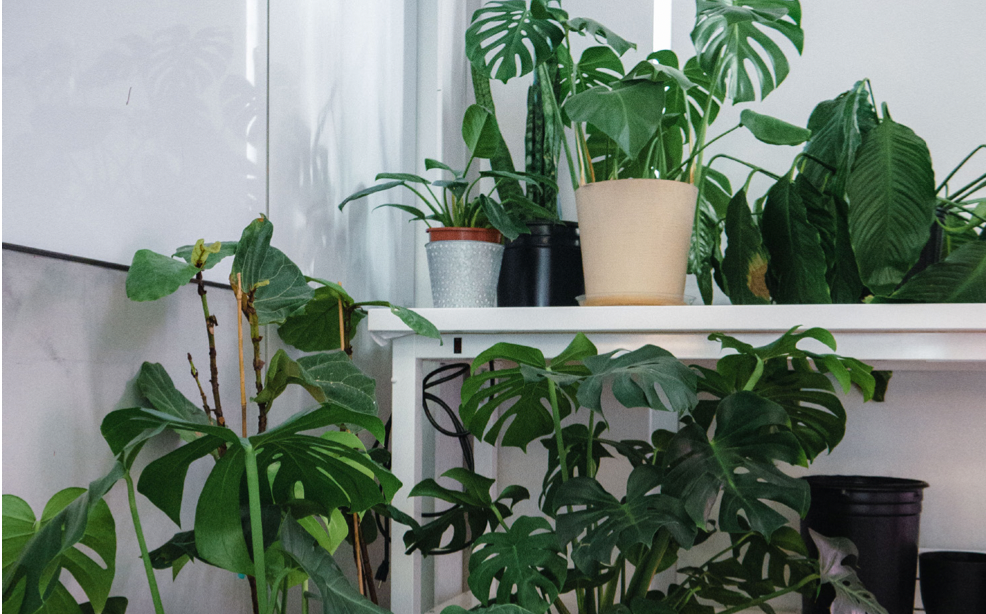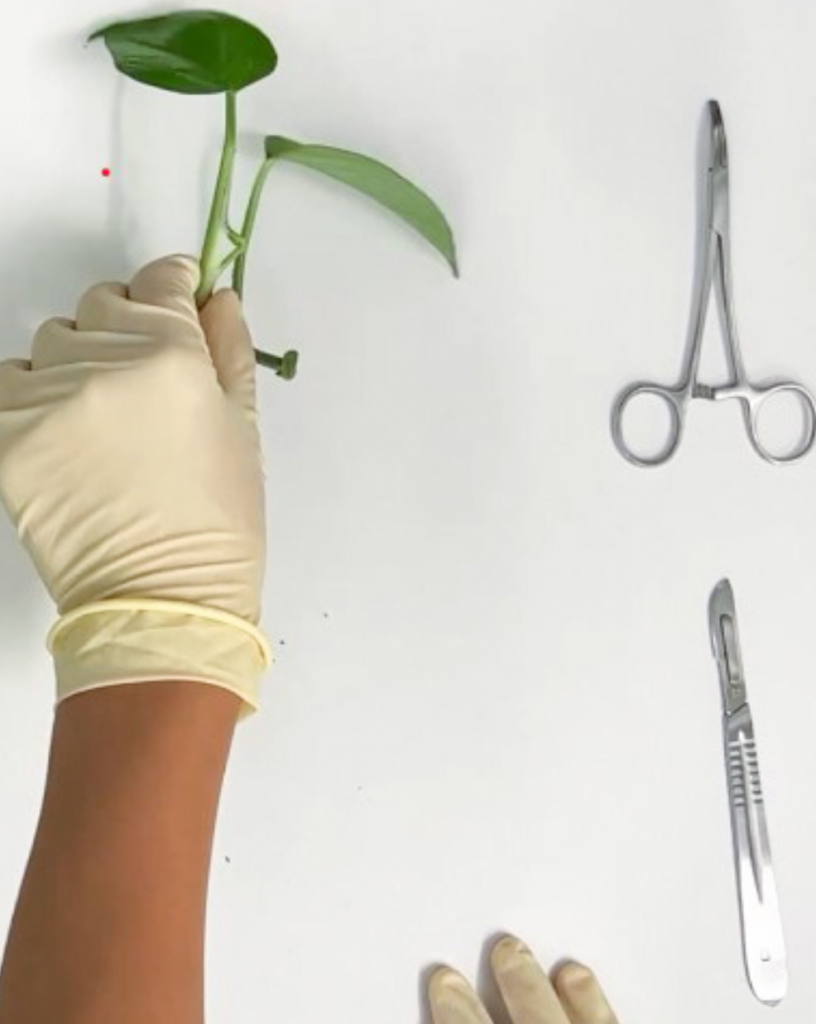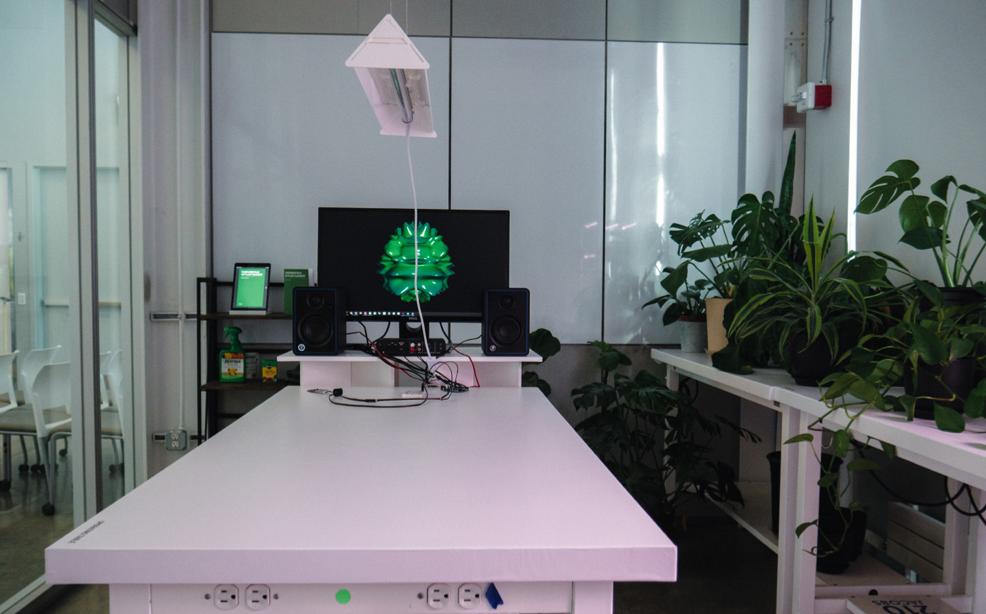VITALIS is a surgical experience for plants that simulates what a renewed relationship with our natural environment might look like.
Abstract
As the consequences of the Anthropocene unfold, it is imperative that humans nurture a mutually beneficial relationship with the world of plants (and beyond), instead of destructively. When participating in the experience, visitors learn about plant care through a medical guidebook and have the hands-on opportunity to operate on a plant themselves; through this direct sensorial interaction, they hopefully walk away with a feeling of in- creased kinship for the non-human.
1. Since the time of ancient civilizations, surgery has been a human invention to combat disease, heal injury, and facilitate birth. This intervention, paired with technological advancement, has al- lowed humans to live longer with a better quality of life. What if we extended the scope of this intervention beyond the human?
2. Additionally, the act of cutting through flesh is visceral, resulting in feelings of fascination, disgust, concern, anxiety, relief, and hope about the human condition. Could this extremely direct, sensorial experience act as a vehicle for mediation between human and non-human?
VITALIS simulates the surgical experience for plants by designing a “growroom.” Here, participants of the experience act as growroom personnel-in-training and are tasked with diagnosing, operating, and conducting post-operative care on a plant patient. They are assigned patients that may require procedures such as propagation, grafting, or trauma treatment. Before surgery, they learn through a surgical guidebook about pre-operative examinations, possible diagnoses, surgical procedures, and medical techniques for a variety of plant species. After surgery, growroom personnel-in-training reference the guidebook to determine a plan for post-operative care.
Methods
Experiential Flow: The first consideration was experiential flow. How is plant surgery conducted? What takes place during pre-operative examinations, surgery, and post-operative care?
Division of Space: Based on the experiential flow I wanted to have, I divided the space into the following areas: a waiting area, a skills lab, an operating table, a propagation nursery, and a rehabilitation area.
Props: Then, I determined what props I needed to create an atmosphere of medicine and surgery.
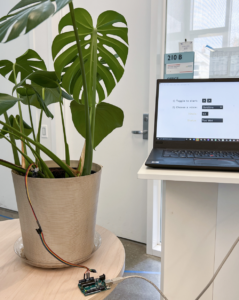
The custom props I created were: vinyl signage, a patient queue monitor, a surgical guidebook called Fundamentals of Plant Surgery, a vitals monitor, and a laser-cut propagation tube holder. The most involved prop was the vitals monitor, since it required hardware, software, and visualization experimentation. The idea behind the vitals monitor was to emulate the vitals monitor used in human surgery, which displays live data about a person’s heart rate, blood pressure, and body temperature.
The pre-bought props included: plant pots, a bookshelf, a metal wire shelving unit, grow lights, soil, Leca, neem oil spray, gardening gloves, propagation tubes, glass vases, a mister, surgical instrument kit, and a seedling kit. Some props that are available to MDes students that I also used for the VITALIS exhibition were: three 30inx60in rolling tables, an iPad, a rolling TV monitor, and two white pedestals.
Final Design
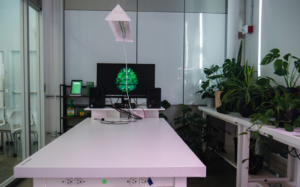
The final design of VITALIS can be described through breaking down the various components of the growroom:
Waiting Area: patients first arrive and get entered into the patient queue. Here, they are evaluated through screening tests and a diag- nosis is determined.
Patient Queue: a monitor that summarizes the status of each patient and their location.
Skills Lab: growroom personnel can study from a library of medical textbooks, practice surgical techniques, and acquire materials for surgery and general care.
Vitals Monitor: present on every operating table, it provides audio and visual feedback on a patient’s health status by monitoring soil moisture levels and pulse data.
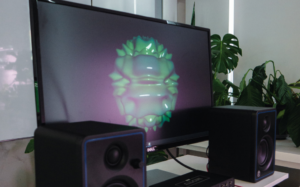 Operating Table: surgery is conducted here. A teacher often accom- panies learning growroom personnel and verbally guides them through surgical procedures until they are ready to perform operations on their own.
Operating Table: surgery is conducted here. A teacher often accom- panies learning growroom personnel and verbally guides them through surgical procedures until they are ready to perform operations on their own.
Full listing
